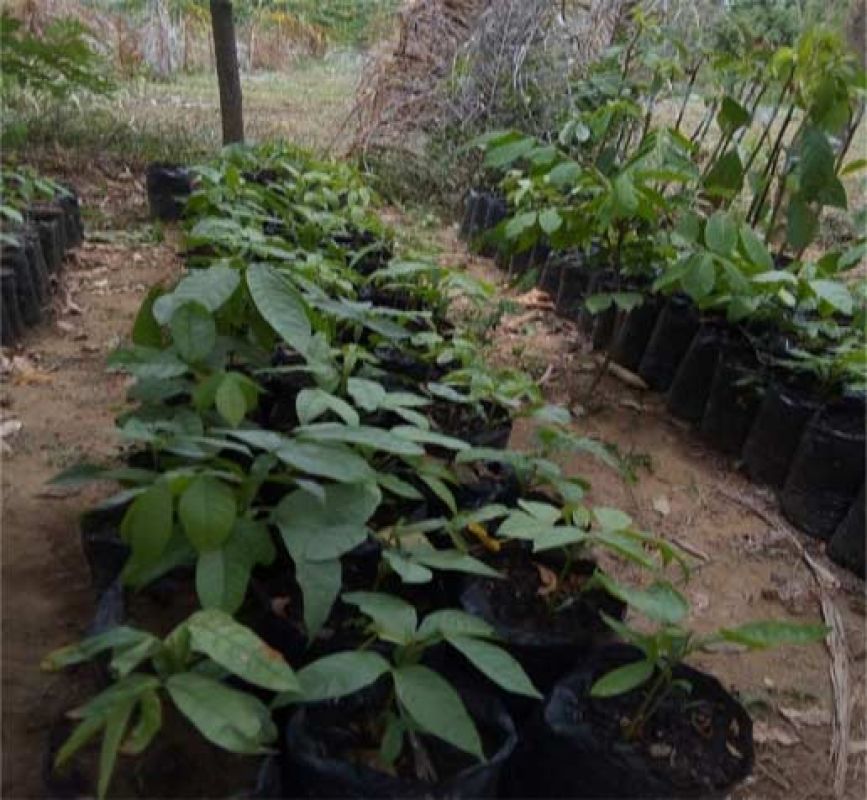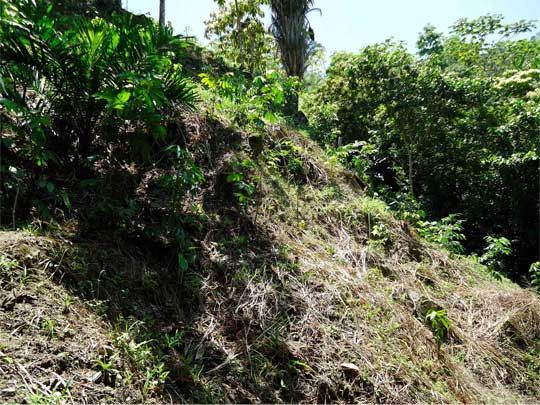HONDURAN PROJECT
Educating the next generation to farm sustainably
Educating the next generation to farm sustainably

Rainforest Saver has been collaborating with a local Honduran NGO, FunaVid (Fundacion Agricola Vid) and Dr. Guillermo Valle (from CURLA, part of the National University of Honduras) since 2009. Dr. Valle had already been working with FUNAVID, and had established 6 little Inga alley plots on FunaVid land and was teaching local high school students using the FunaVid premises.
The problem

We are collaborating with Dr. Guillermo Valle and FunaVid to promote Inga alley cropping as a tried and tested alternative, primarily through teaching in high schools. This provides the farmers with a better and sustainable livelihood without the need to keep destroying more rainforest. It substantially reduces erosion. Unless such a sustainable approach is disseminated throughout the small farms on the steep slopes of Honduras slash and burn farming will destroy any remaining rainforest. Then the soil will be washed away into the sea, leaving the land infertile and the coral reef seriously damaged by washed down sediment. The farmers cannot grow crops to feed their families without the soil. Both fishing and tourism depend on the coral reef. Then how will the people live?
Besides damaging the coral reef the sediment is also damaging the rivers. It settles and makes the river shallow and liable to flooding and no longer a healthy environment for fish. The sediment brought down by the rivers when there is slash and burn up the river can be seen to be orange, from all the orange soil that it is carrying down.
The river on the left is silted up with sediment washed down from deforested mountains, while the mountains behind the river on the right are still forested. Photos taken near FunaVid, Honduras.Photos by Tiiu Miller 2009.
On the left it is easy to see that rain on the bare cleared slopes would wash the soil away. On the right is a row of Inga planted along the contours. It provides a permanent cover on the soil and greatly reduces erosion.
The project
We cannot tell these subsistence farmers to just stop slash and burn farming. They do not know any other way to make a living. The only solution is to provide them with an alternative. Inga alley farming is such an alternative, but it is a very different way of farming from anything that they are used to. The young are more willing to accept and adopt new ideas. Also adult farmers have all sorts of other responsibilities and so are harder to gather together to be taught a new farming method. So this project concentrates on teaching this new method to high school students. These are from rural schools, where the students’ parents are the slash and burn farmers, and the parents are encouraged to come to the school and see this new farming method for themselves too,and they will be helped to adopt it if they are willing.
Initially Dr. Valle and his colleagues from CURLA were teaching a comprehensive curriculum of sustainable farming to students from 2 local schools. Besides Inga alley farming this included topics like properties of soil, plant growth, propagation, pests and diseases, river basin management, agroforestry with cattle, leadership, and more. We now want to roll out as much of this program as possible over much of Honduras, but instead of teaching the students directly the teachers are being taught. The first group of teachers from six local schools have already been taught, with considerable interest and suggestions from them. However, as time has passed and some teacers have left and new ones have come it is necessary to do more teaching even at these schools.
A rough location map. Honduras is coloured/outlined in red and the mountainous area is roughly coloured in as brown on the second map.
The project was initially located along the N. coast of Honduras. The first 6 schools where Inga plots have been established are all near the N. coast. But it is being expanded much further. 12 of the 18 departments of Honduras have rural high schools with a government-sponsored program of tutorial teaching. This program aims to include these schools. They are divided into 47 groups of 4 to 6 schools, with an average of 15 teachers per group. Obviously only a small proportion of these can be covered in any one year.
Map of the schools. The 6 schools in the blue circle have all had Inga plots established. Some teaching has been done with the ones in green, but not yet with the ones in Western Honduras.
There has been some disruption to this project. After the first 6 schools were established with Inga plots and some training for the teachers and students Dr. Valle proceeded with teaching a group of teachers from the schools marked in green on the map. He also contacted schools in Western Honduras and was set to go there, but severe drought prevented that. The schools were closed and the government had to provide emergency food aid to the region. Very sad, when one considers that had the Inga system been there it would have provided some resistance to drought, as the mulch holds the water and can make it possible for crops to grow in conditions where other farming no longer works.
Subsequently there were difficulties with getting a suitable assistant for Dr. Valle, but earlier in 2019 for a short time we had Ronald Ramos. He was very well qualified and he and Dr. Valle made visits to 3 of the 6 schools, and he assessed the needs of all of them.
Some had been growing vegetables in their Inga plots, but the Inga in some others had been damaged, with one school’s Inga having been inadvertently cut down altogether. But all were eager to continue with the project. Inga seedlings were planted and some were distributed to them to replace those that were lost, but more are needed.
We now welcome Hector Tavalera to the team. Dr. Valle was getting on well with making the necessary contacts to visit Western Honduras, as well as continue training more teachers in the Atlantida region. All was set to go – and then the coronavirus struck. Like other countries Honduras has severe restrictions, and we have to wait till these are lifted to be able to proceed.
Dr. Valle is also engaged in research into possible alternative trees that might be used like the Inga, and experiments on finding the varieties of crops that do best under the new conditions of climate change.
Experimental row of maize. Four varieties were planted at 20 day intervals to prevent cross pollination. Photo Dr. Valle 2019
We need your support. Please help us by donating whatever you can afford
with any major credit card or post a cheque to
The Rainforest Saver Foundation
33 Pentland View
Edinburgh
EH10 6PY
All donations, large or small, are very welcome and will be put to good use very quickly.